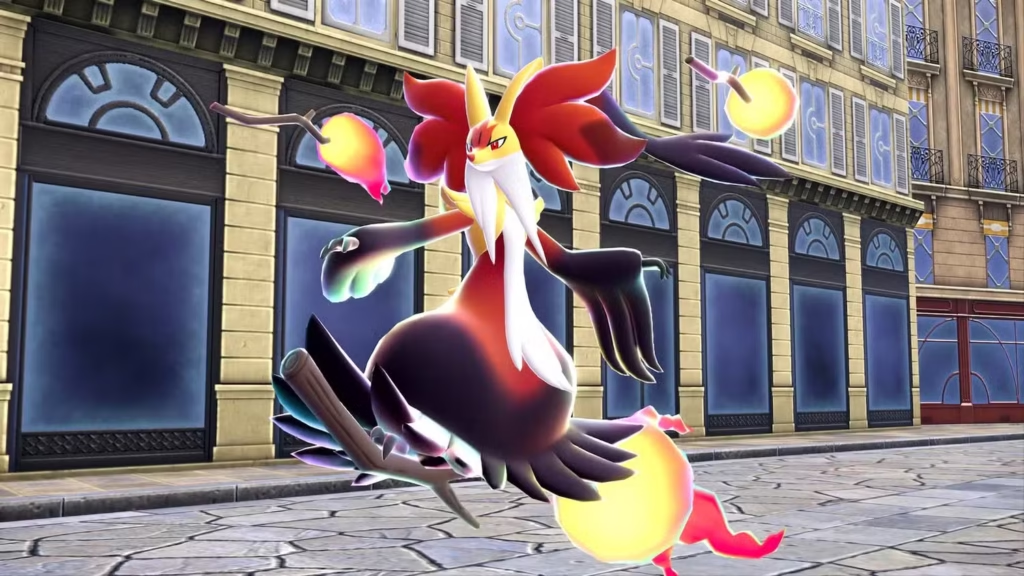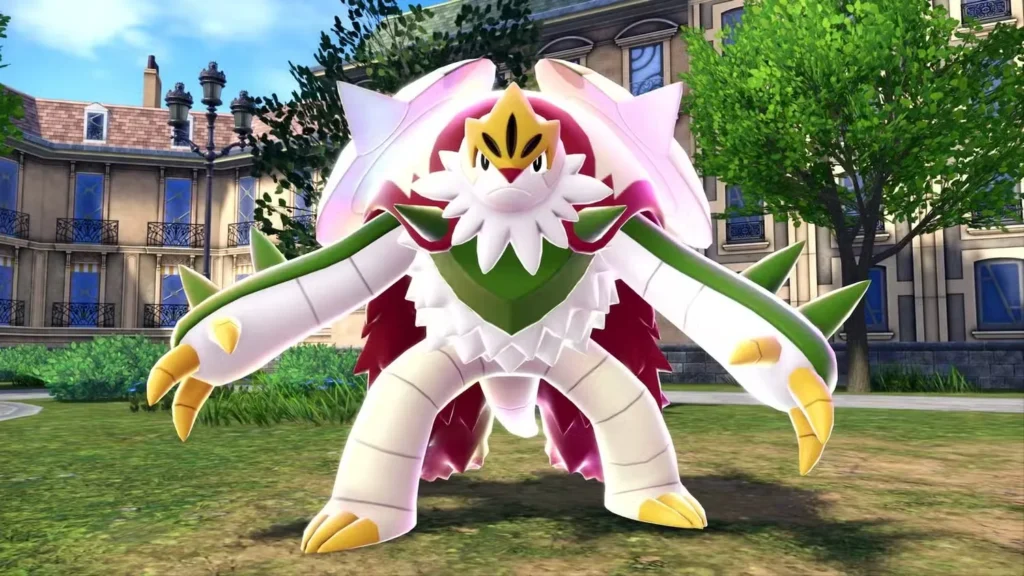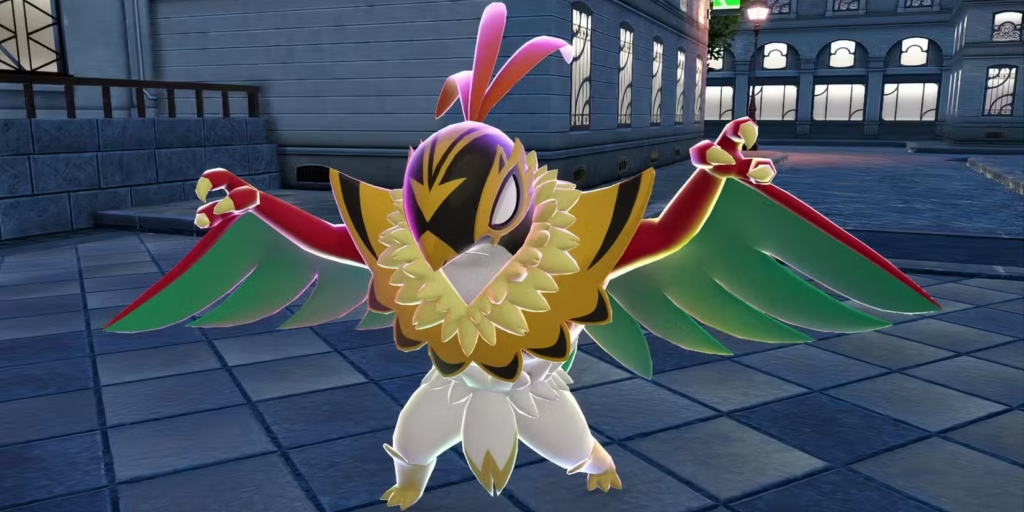
Newsletter Subscribe
Enter your email address below and subscribe to our newsletter

Enter your email address below and subscribe to our newsletter
Your Source for Game News and Guides

Complete tier list ranking all 26 new Mega Evolutions in Pokemon Legends Z-A. Discover the best Megas, their stats, movesets, and which ones deserve a spot on your team.
Pokemon Legends Z-A dropped with a massive surprise: 26 brand-new Mega Evolutions that have never existed in any previous Pokemon game. This isn’t just rehashing old favorites—we’re talking completely fresh designs, stat distributions, and strategic possibilities that shake up the competitive scene.
But here’s the thing: not all Megas are created equal. Some of these transformations turn mediocre Pokemon into absolute powerhouses, while others somehow manage to make their base forms look better by comparison. If you’re wondering which Mega Evolutions deserve the precious Mega Evolution slot on your team (you can only use one per battle, after all), you’ve come to the right place.
Let me break down every new Mega Evolution by tier, explain what makes the top picks so dominant, and help you avoid wasting resources on the underwhelming ones.

Before we dive in, here’s something that caught many players off guard: Mega Greninja, Mega Delphox, and Mega Chesnaught aren’t included in this tier list because they’re locked behind competitive play and a Nintendo Switch Online subscription.
Here’s the release schedule:
Since most players won’t have access to these immediately, and their stats haven’t been fully tested in normal gameplay, they’re sitting this ranking out. We’re focusing on the 26 Megas you can actually use right now.

These are the Megas that dominate battles, have incredible stat optimization, and should be your first choices for serious team building.
Why it’s S-tier: Honestly, nobody expected Starmie to become arguably the best Mega Evolution in the entire game, but here we are.
Key stats:
What makes it special: Mega Starmie combines incredible offensive stats with blistering Speed, meaning it consistently moves first and hits like a truck. The hybrid attacker designation means you’re not locked into just special moves—you have flexibility depending on what your opponent throws at you.
The coverage is phenomenal. Water and Psychic STAB moves already hit a huge portion of the type chart, and Starmie’s movepool lets you cover weaknesses effectively. If you managed to catch Staryu in Wild Zone 2 early, evolve it and start working toward this Mega immediately.
Best use case: Fast-paced battles where you need to strike first and strike hard. Perfect for taking down bulky opponents before they can set up.
Why it’s S-tier: If you thought Chandelure was already a Special Attack beast, wait until you see the Mega form.
Key stats:
What makes it special: That 175 Special Attack isn’t a typo. Mega Chandelure can obliterate opponents with powerful Ghost and Fire-type moves, and the coverage options are strong enough to handle most threats. The defensive stats got buffed too, so it’s not the glass cannon you might expect.
Best use case: Sweeping teams with special attacks. Excellent against defensive walls that can’t handle raw power.
Why it’s S-tier: On paper, a 565 Base Stat Total sounds modest compared to others in S-tier. But stat optimization matters more than raw numbers.
Key stats:
What makes it special: That hilariously low 40 Special Attack isn’t a weakness—it’s a feature. Every single stat point that could’ve been wasted on Special Attack went into Defense, Speed, and Attack instead. You get a Pokemon that hits hard physically, tanks everything, and still moves at a respectable pace.
Steel/Flying is one of the best defensive type combinations in Pokemon, giving you resistances to a huge chunk of the type chart. Moves like Brave Bird and Iron Head mean Mega Skarmory doesn’t just sit there tanking—it actively threatens opponents.
Best use case: Physical attacking tank that walls most physical threats while dishing out serious damage.
Why it’s S-tier: Zygarde was already impressive, but the Mega Evolution pushes it into “actually broken” territory.
Key stats:
What makes it special: Let’s talk about Nihil Light, because it’s genuinely absurd. This move:
This is the only completely new move in Pokemon Legends Z-A, and it’s attached to a Mega with the highest Special Attack in the game. That’s not balanced, that’s a nuclear option.
Best use case: Late-game battles, boss fights, competitive matches where you absolutely need to win. This is your ace in the hole.
These Megas are genuinely strong and viable for most content. They might have minor weaknesses, but they’re still powerful additions to any team.
Why it’s A-tier: Mega Barbaracle does something rare—it completely changes its typing by dropping Water for Fighting.
Key stats:
What makes it good: The type change opens up new strategic possibilities. Fighting-type STAB moves hit incredibly hard, and the Rock typing gives you options against Flying, Bug, and Fire types. The movepool diversity means you can customize it for different threats.
Minor weakness: Losing Water typing means you lose some coverage, but the Fighting-type compensation makes up for it.
Why it’s A-tier: Not flashy, but reliable and powerful where it counts.
Key stats:
What makes it good: Emboar was always held back by its defenses and Speed. The Mega Evolution patches these issues while boosting Attack to respectable levels. It’s not going to surprise anyone, but it consistently performs well in battles.
If you went with a Kanto starter, Mega Emboar offers different type coverage that complements Water or Grass starters nicely.
Minor weakness: The Attack boost isn’t massive (25 points), so it feels more like refining what was already there rather than transforming it.
Why it’s A-tier: Ground and Steel is an excellent type combination, and Excadrill maximizes it.
Key stats:
What makes it good: Ground-type moves are consistently useful throughout the game, hitting Electric, Steel, Poison, Rock, and Fire types super-effectively. The Steel typing gives you incredible resistances (seriously, Steel resists like 10 different types).
Minor weakness: While the stats are great, it’s somewhat predictable. Opponents who know you have Mega Excadrill will prepare for Ground-type attacks.
Why it’s A-tier: Falinks is the only Generation 8 Pokemon in the game, and its Mega Evolution does it justice.
Key stats:
What makes it good: What Falinks lacks in STAB diversity (only Fighting-type), it makes up for with an incredibly diverse movepool. You can run coverage for Psychic, Flying, and Fairy types that normally threaten Fighting-types, making it surprisingly versatile.
Minor weakness: Being pure Fighting means you’re only getting STAB on one type of move, which limits your options slightly.
Why it’s A-tier: Despite polarizing opinions on its design, the stats don’t lie.
Key stats:
What makes it good: Water/Dragon is a fantastic offensive combination. You get STAB on two commonly useful types, and the stat distribution supports an aggressive playstyle. That 160 Attack means anything that doesn’t resist your moves is getting crushed.
Minor weakness: Low HP and Speed hold it back from S-tier. You hit like a freight train, but you’re somewhat slow and can’t take too many hits before going down.
Why it’s A-tier: Eternal Flower Floette getting a Mega Evolution is fascinating from a lore perspective and strong from a gameplay one.
Key stats:
What makes it good: Fairy-type is excellent both offensively and defensively in modern Pokemon. High Special Attack means Fairy moves hit extremely hard, and high Special Defense means special attackers struggle to break through.
Minor weakness: Coverage moves are lackluster. You’re mostly relying on Fairy-type STAB, which while powerful, can be walled by Steel-types.

Why it’s A-tier: One of the publicly announced Megas before release, and it delivers on expectations.
Key stats:
What makes it good: Base Hawlucha is decent but forgettable. Mega Hawlucha transforms it into a legitimate threat with stats that support both offensive and defensive play. The Fighting/Flying combo is rare and offers unique coverage options.
Minor weakness: Doesn’t excel in any one area—it’s good at everything but not amazing at anything specific.
Why it’s A-tier: Featured as Naveen’s signature Pokemon, and for good reason.
Key stats:
What makes it good: This is a tank that can also fight back. The defensive stats mean Mega Scrafty can survive almost anything, and with Bulk Up, you can boost Attack and Defense even further mid-battle. The coverage moves available mean you can hit a wide variety of threats super-effectively.
Minor weakness: Speed isn’t great, so faster opponents can chip away at you before you get going.
These Megas have redeeming qualities and can work in specific team compositions, but they have notable weaknesses that prevent them from being top-tier choices.
Why it’s B-tier: Fairy/Flying sounds amazing on paper, but execution leaves something to be desired.
Key stats:
What holds it back: The movepool is surprisingly limited. Air Slash is basically your only strong Flying-type option, and while Fairy moves are good, you’re not taking full advantage of that dual typing. You have incredible resistances but struggle to leverage them offensively.
When to use it: If you need a defensive pivot that can handle Dragon and Ground types specifically, Mega Clefable works. Just don’t expect it to sweep teams.
Why it’s B-tier: This is genuinely confusing. Dragonite got a Mega Evolution and somehow ended up worse in some ways.
Key stats:
What holds it back: Regular Dragonite is a physical powerhouse. Mega Dragonite shifts toward special attacks but has a hybrid movepool, meaning you’re not fully optimized for either physical or special attacking. It’s good, but it feels like a downgrade from what you already had.
When to use it: If you want to run a mixed attacker set or need Dragonite’s bulk with more Special Attack options.
Why it’s B-tier: Amazing Special Defense, but crippled by terrible Speed.
Key stats:
What holds it back: In Pokemon Legends Z-A, Speed affects cooldowns on all moves. Being this slow means you’re constantly waiting to attack while opponents pummel you. The defensive stats help you survive, but you can’t capitalize on opportunities quickly enough.
When to use it: Trick Room teams or situations where you know you’re fighting slower opponents.
Why it’s B-tier: Similar issues to Dragalge—great offensively, terrible Speed.
Key stats:
What holds it back: That Special Attack means nothing if you’re always moving last. By the time Mega Drampa attacks, faster opponents have already set up, boosted their stats, or knocked out your teammates.
When to use it: Same as Dragalge—Trick Room or guaranteed slower matchups.
Why it’s B-tier: Loses one of the best abilities in Pokemon due to game mechanics.
Key stats:
What holds it back: Base Eelektross has Levitate, making it immune to Ground-type moves despite being an Electric-type. Pokemon Legends Z-A removed abilities entirely, so Mega Eelektross loses that immunity. Combined with only average bulk, it becomes significantly more vulnerable.
When to use it: If you need a hybrid Electric-type and don’t mind the Ground weakness.
Why it’s B-tier: Ice-types have always struggled defensively, and Mega Froslass can’t escape that.
Key stats:
What holds it back: Ice is the worst defensive type in Pokemon. You resist Ice, and that’s it. Meanwhile, you’re weak to Fire, Fighting, Rock, Steel, and Ghost. Mega Froslass hits hard and fast but folds under any pressure.
When to use it: Glass cannon strategies where you plan to knock out opponents before they can retaliate. If you’re looking for early-game catches, consider this a late-game option instead.
Why it’s B-tier: Fast but lacking the tools to use that Speed effectively.
Key stats:
What holds it back: Move coverage is poor. You’re fast, but you don’t have the moves to threaten a wide enough range of opponents. You’ll run into Pokemon that resist your limited movepool and can’t do much about it.
When to use it: If you love Pyroar’s design and want to make it work despite the limitations.
Why it’s B-tier: One of the coolest new designs, but struggles to compete.
Key stats:
What holds it back: Grass and Poison aren’t great offensively. Many Pokemon resist one or both types, and middling Speed means you’re often attacking second. Being a hybrid attacker sounds flexible, but in practice, you’re just okay at physical and special attacks instead of great at either.
When to use it: If you’re building a theme team or just love the design (it really is fun).
These Megas have significant flaws that make them difficult to justify using over other options, even in casual playthroughs.
Why it’s C-tier: The marketing campaign was entertaining, but the Mega Evolution is underwhelming.
Key stats:
What holds it back: Everything about Mega Malamar screams “decent but not good.” It doesn’t excel at anything, and being a hybrid attacker with mediocre offensive stats means you’re not threatening anyone.
When to use it: Honestly? Probably don’t unless you’re really attached to Malamar.
Why it’s C-tier: This one genuinely hurts because Meganium deserved better.
Key stats:
What holds it back: The movepool is terrible. You get a few viable Grass moves and a few viable Fairy moves, but not enough of either to be effective. Coverage is almost non-existent, and that 4x Poison weakness means any Poison-type move instantly chunks your health or knocks you out.
If you chose Meganium as your Kanto starter, this is unfortunately disappointing news. The base form might actually be more useful.
When to use it: If you’re doing a challenge run or want to prove it can work despite everything.
Why it’s C-tier: Takes everything good about Scolipede and removes it.
Key stats:
What holds it back: Base Scolipede’s entire identity was being fast and hitting hard. Mega Scolipede trades that Speed for Defense and Attack, creating a slow, somewhat bulky attacker with low HP and average Special Defense. You’re not fast enough to strike first, not bulky enough to tank reliably, and not hitting hard enough to justify the trade-offs.
When to use it: It’s genuinely hard to recommend this over base Scolipede or just using a different Mega entirely.
Now that you know the rankings, here are some strategic considerations:
Remember: you can only use one Mega Evolution per battle. Choose wisely based on your opponent’s team composition.
Your Mega should either:
If you’re running Eevee with various evolutions, think about which Mega complements those type combinations best.
Some Megas like Mega Starmie are available early and make the campaign easier. Others like Mega Zygarde are late-game rewards. Plan your team progression accordingly.
Getting Mega Stones requires materials. If you’re farming for resources, check out guides on Colorful Screws, Clear Purple Sludge, and hunting Alpha Pokemon for rare drops.
Some base Pokemon require high happiness to evolve before you can even access their Mega forms. Plan ahead if you’re working toward specific Megas.
For casual playthroughs: Honestly, use whatever Mega Evolution you think is cool. The S-tier and A-tier choices make life easier, but C-tier Megas can still clear the story with proper support.
For competitive play: Stick to S-tier and high A-tier Megas. Mega Starmie, Mega Chandelure, Mega Skarmory, and Mega Zygarde will consistently outperform other options when facing optimized opponents.
For Rank battles: Remember those Gen 6 starter Megas are locked behind competitive play. Reaching higher ranks unlocks these exclusive options, potentially shifting the tier list once they’re widely available.
Worth mentioning: future DLC could add more Mega Evolutions or rebalance existing ones. Mega Raichu, for instance, is confirmed to get two different Mega Evolution forms in the Mega Dimension DLC, which could be game-changing.
If you’re building a long-term team and want to future-proof your choices, consider Pokemon that might receive Mega Evolutions in updates. Having a good Pikachu ready to evolve means you’ll be prepared when that content drops.
Pokemon Legends Z-A’s 26 new Mega Evolutions range from “absolutely broken” to “why did they do this to you?” Mega Starmie, Mega Chandelure, Mega Skarmory, and Mega Zygarde lead the pack, while unfortunate souls like Mega Meganium and Mega Scolipede struggle to justify their existence.
My recommendations:
The beauty of having 26 options is that experimentation is encouraged. These tiers aren’t absolute laws—they’re informed recommendations based on stats, movesets, and practical battle experience. If you love a B-tier Mega and want to make it work, go for it. Half the fun of Pokemon is proving the tier lists wrong.
Now get out there and start Mega Evolving!
For official updates on Pokemon Legends Z-A and Mega Evolutions, visit the Pokemon Legends website or get the game from the Nintendo Store.
Also Read: